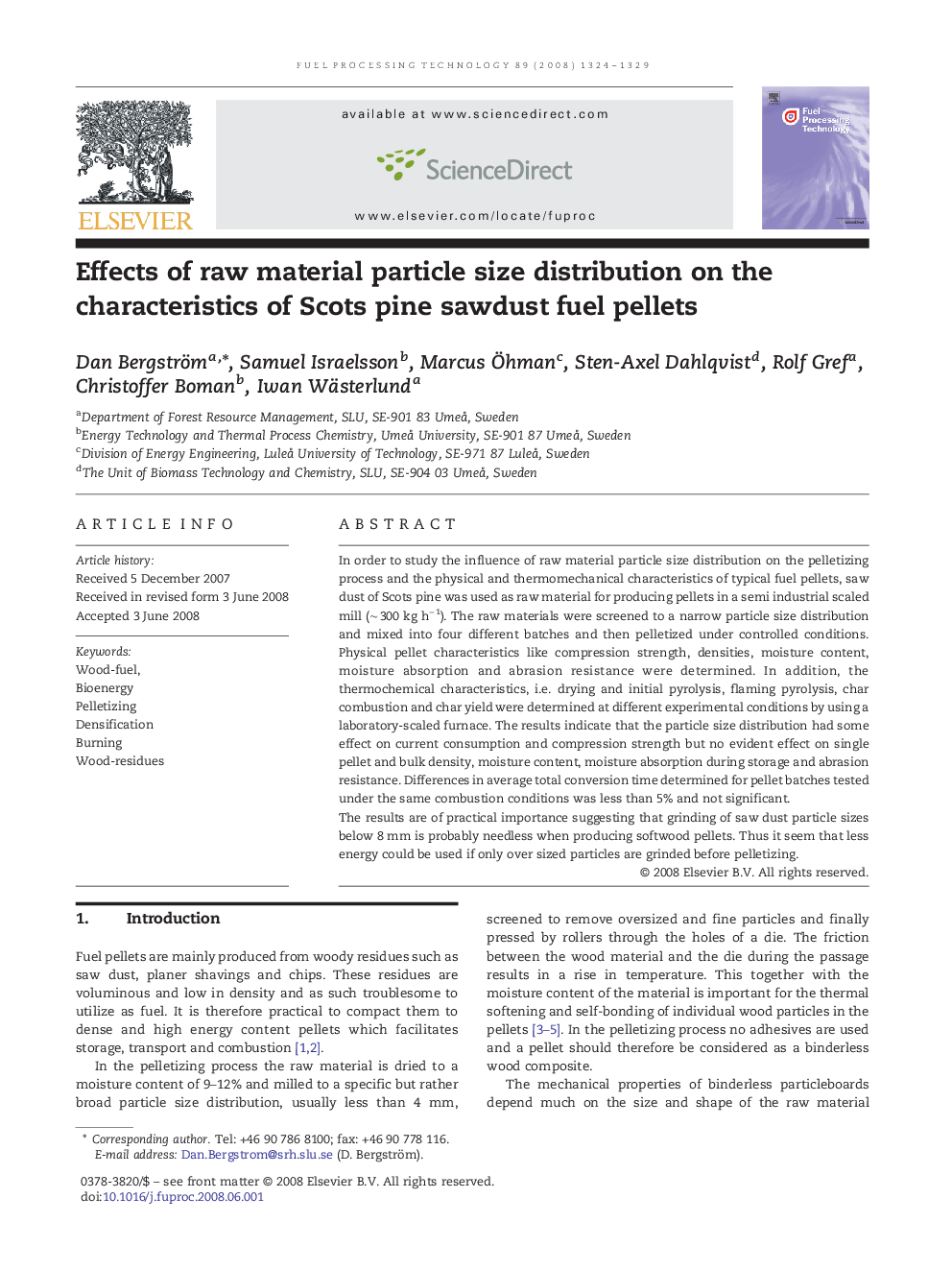| Article ID | Journal | Published Year | Pages | File Type |
|---|---|---|---|---|
| 211076 | Fuel Processing Technology | 2008 | 6 Pages |
In order to study the influence of raw material particle size distribution on the pelletizing process and the physical and thermomechanical characteristics of typical fuel pellets, saw dust of Scots pine was used as raw material for producing pellets in a semi industrial scaled mill (∼ 300 kg h− 1). The raw materials were screened to a narrow particle size distribution and mixed into four different batches and then pelletized under controlled conditions. Physical pellet characteristics like compression strength, densities, moisture content, moisture absorption and abrasion resistance were determined. In addition, the thermochemical characteristics, i.e. drying and initial pyrolysis, flaming pyrolysis, char combustion and char yield were determined at different experimental conditions by using a laboratory-scaled furnace. The results indicate that the particle size distribution had some effect on current consumption and compression strength but no evident effect on single pellet and bulk density, moisture content, moisture absorption during storage and abrasion resistance. Differences in average total conversion time determined for pellet batches tested under the same combustion conditions was less than 5% and not significant.The results are of practical importance suggesting that grinding of saw dust particle sizes below 8 mm is probably needless when producing softwood pellets. Thus it seem that less energy could be used if only over sized particles are grinded before pelletizing.
